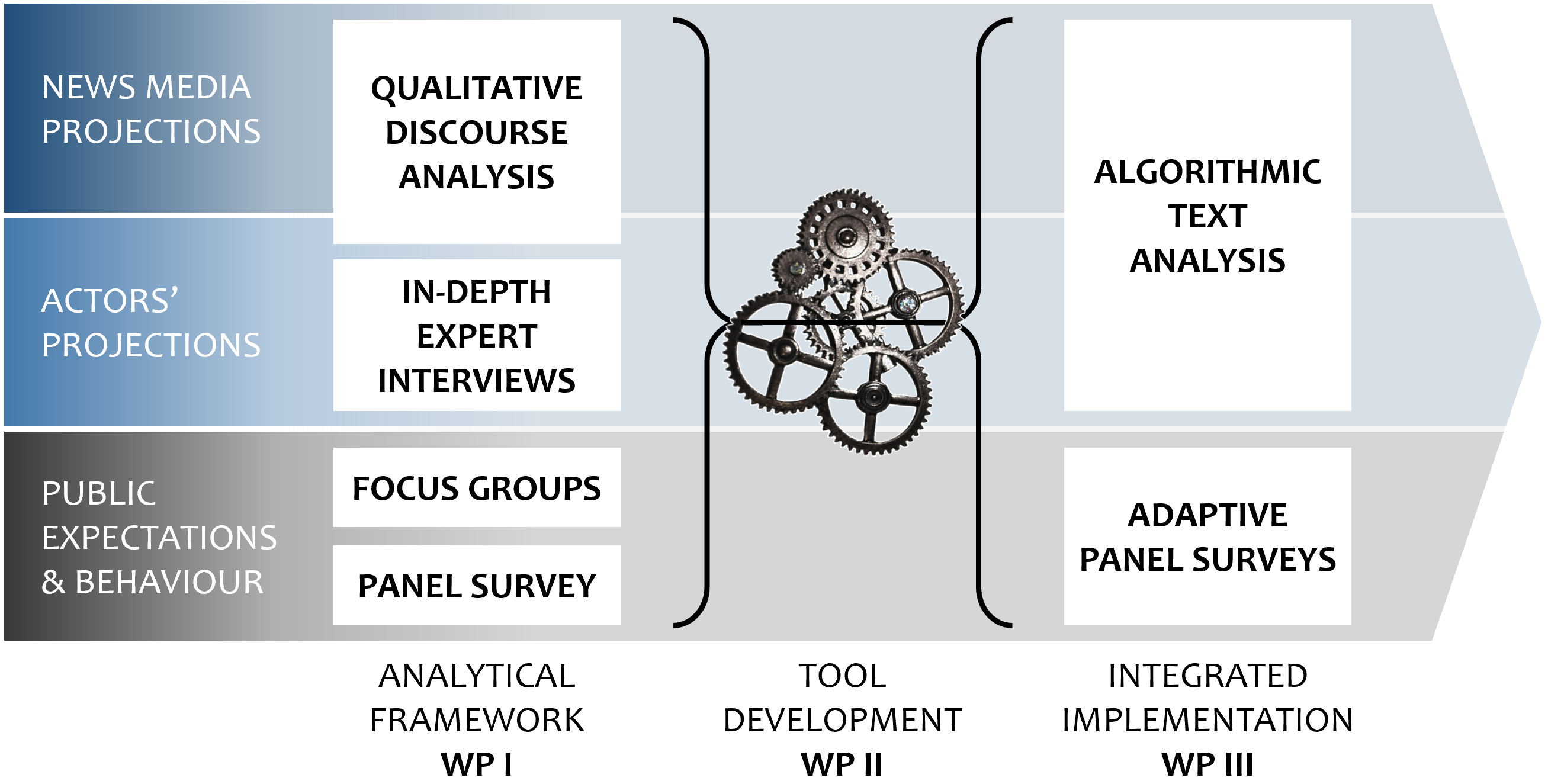


| HOME | • | CONCEPT | • | DESIGN | • | METHOD | • | PUBLICATIONS | • | TEAM |
PROFECI ERC LAB
▸Faculty of Social Sciences
▸The Hebrew U of Jerusalem
PRINCIPAL INVESTIGATOR
▸Keren Tenenboim-Weinblatt
ERC Grant No. ▸802990
February 2019 - January 2024
▸Faculty of Social Sciences
▸The Hebrew U of Jerusalem
PRINCIPAL INVESTIGATOR
▸Keren Tenenboim-Weinblatt
ERC Grant No. ▸802990
February 2019 - January 2024
|
Comparative Case Study • Work Plan COMPARATIVE CASE STUDY PROFECI develops and employs a multi-layered mixed-method approach to study public projections, using a comparative design of six longitudinal case studies. It focuses on projections regarding highly salient political conflicts with far-reaching consequences, ranging from routine democratic elections, to exceptional referenda, to violent conflict. For its analysis, PROFECI relies on three retrospective case studies, whose outcomes are known, as well as three real-time cases, that are investigated as they unfold.
PROFECI studies the ▸evolution of projections and their ▸interaction with ongoing developments in each case over extended periods of time. By combining both retrospective and real-time case studies of projection in different kinds of settings, PROFECI aims to understand both the fast-moving interactions shaping current expectations at a micro-level, and the mostly slow and gradual evolution of public projections on a macro-level. WORK PLAN To study the social process of public projection, PROFECI proceeds in three main steps.
Analytic Framework. PROFECI's first stage serves to understand and conceptualize each of the key elements and ▸processes involved in the collaborative, evolutionary construction and reception of public projections. For this purpose, the project gathers rich qualitative data, ranging from the strategies used by ▸political actors, experts, journalists and others to construct and formulate projections, to the transformation and representation of projections in both ▸news and ▸social media, to the specific meaning and ▸implications derived from public projections by ▸members of the public. Tool Development. PROFECI's second stage builds upon the conceptual understanding developed in the first stage to devise new strategies and tools capable of measuring each element and process at scale and over time. Specifically, PROFECI relies on a combination of computational techniques for the analysis of digital texts expressing public projections. In addition, the project develops tailored strategies for measuring the reception of public projections among the public, using adaptive rolling panel surveys. Integrated Implementation. PROFECI's third stage applies the tools and strategies developed in stage two to trace the construction, negotiation, evolution and reception of public projections over time. For this purpose, PROFECI relies on ▸six longitudinal case studies. Among these case studies, three are retrospective, enabling a reconstruction of public projection dynamics over extended periods of time. The other three case studies are studied in real-time while they evolve, enabling an analysis of micro-level interactions and dynamics. | ||||||||||||||||||
|
|
